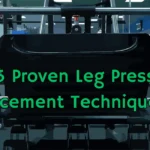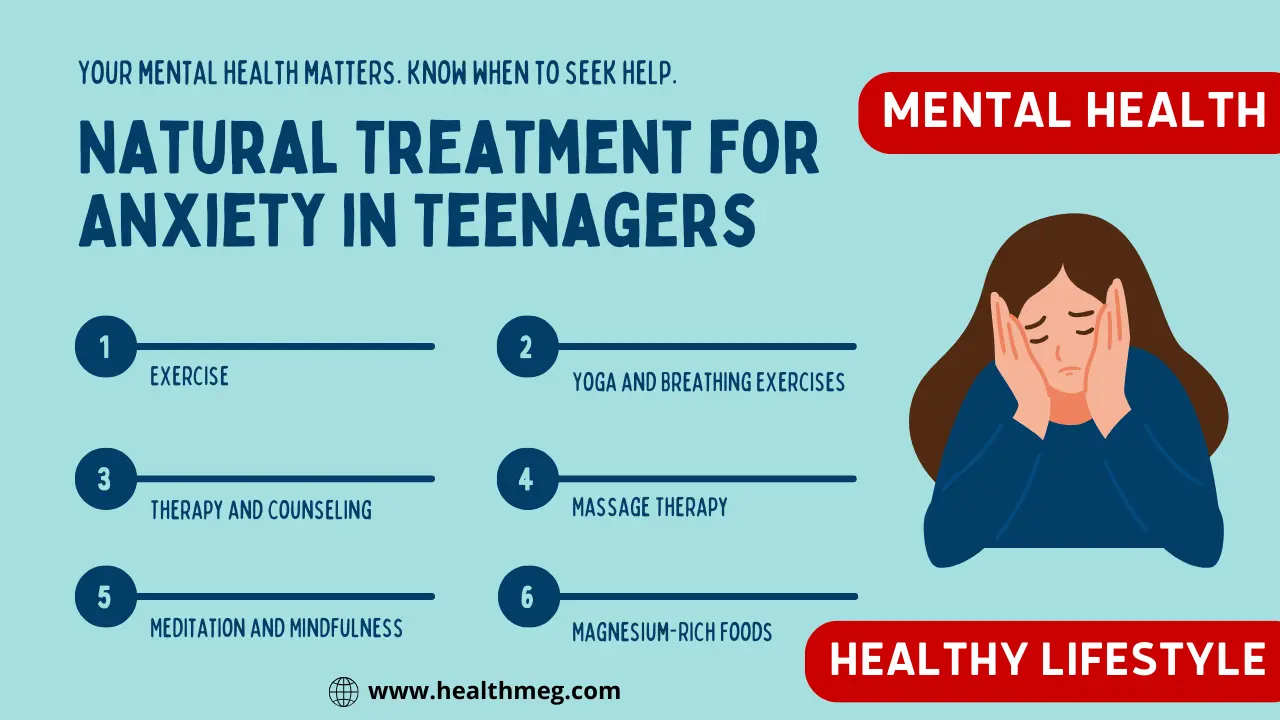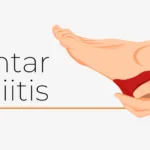If you’re one of the millions of people suffering from chronic lower back pain, you know how debilitating it can be. The ache in your lower back never seems to go away completely. Some days, it’s a dull annoyance. Other days, it’s so intense you can hardly get out of bed. Lower back pain not only causes physical discomfort but can greatly impact your quality of life.
The good news is there are solutions to alleviate lower back pain. One of the most effective treatment options is physiotherapy. Specific exercises prescribed by a physiotherapist can provide lasting relief by targeting the underlying causes of your pain. Let’s explore 9 effective physiotherapy exercises for lower back pain that can help you successfully manage lower back pain.
Do Read the People Also Ask (FAQs) about this topic.
Understand Lower Back Pain: Causes and Symptoms
To understand how to treat back pain, it helps to first understand what’s causing it. Lower back pain often arises from problems with the lumbar spine, muscles, nerves, bones, joints or intervertebral discs (cushioning between vertebrae) in your lower back.
Common causes include:
- Strains or sprains: Overstretched muscles or ligaments, often from improper lifting, sudden movements or poor posture.
- Bulging or ruptured discs: Discs lose flexibility and elasticity from injury or wear and tear. This can irritate nearby nerves.
- Arthritis: Cartilage breakdown in spinal joints leading to inflammation and bone spur formation.
- Skeletal irregularities: Conditions like scoliosis where the spine curves abnormally.
Lower back pain can vary from mild to excruciating.
Symptoms may include:
- Aching muscles or numbness/tingling in the legs.
- Reduced range of motion making it difficult to bend or twist.
- Stabbing or shooting pain that radiates down the leg (sciatica).
- Muscle spasms.
- Pain worsens with movement.
If you experience any of these symptoms, consulting a physiotherapist can help identify the underlying cause and create a tailored treatment plan.
The Role of Physiotherapy in Back Pain Management
Physiotherapy is a critical component of treating lower back pain. Your physiotherapist has extensive training in safely and effectively alleviating back pain through personalized exercise programs and hands-on techniques including:
- Therapeutic exercises: Specific exercises to build strength, improve flexibility and stabilize the spine. We’ll cover these in detail shortly.
- Manual therapy: Hands-on techniques like spinal manipulation or mobilization to improve joint mobility and reduce muscle tension.
- Education: Advice on proper lifting, posture and lifestyle to prevent future back injuries.
- Modalities: Applications like heat/ice therapy, electrical stimulation or ultrasound to relieve pain.
Regular physiotherapy helps re-align the musculoskeletal system and builds strong core and back muscles. This provides long-lasting relief by addressing the root causes of your pain rather than just the symptoms.
Benefits of Physiotherapy Exercises
Physiotherapy exercises offer many advantages for managing lower back pain including:
Pain Reduction– Specific back exercises can alleviate inflammation and muscle spasms to relieve pain. Over time, strengthening muscles also reduces wear and tear to limit re-injury.
Improved Mobility– The right exercises improve flexibility allowing easier movement and promoting proper alignment of your back and pelvis. This makes everyday activities less painful.
Built-up Strength– Stronger core, back and gluteal muscles better support your spine, improving stability and preventing injury from physical activity.
Lasting Results– Consistency with physiotherapy exercises means results last long after your treatment program ends. The exercises can be continued independently at home to maintain a strong, healthy back.
Function Restoration– Exercises improve your ability to perform daily tasks like lifting objects or even getting dressed without pain or limitation. This leads to a better overall quality of life.
Personalized Programming– Your physiotherapist customizes your exercise routine based on your specific condition, needs and capabilities. Exercises are progressed appropriately as your body gets stronger.
Physiotherapy Exercises for Lower Back Pain
Now let’s explore some of the most effective physiotherapy exercises to alleviate lower back pain. Try the following exercises.
Note:- Always start slowly by focusing on proper form and gradually increase intensity and duration. Stop if you experience any pain and consult your healthcare professional for proper guidance.
1. Hip Flexors Stretch
The hip flexors are a group of muscles at the front of your hip that can get tight from prolonged sitting. Tight hip flexors pull on your pelvis, which tilts it forward and strains your lower back. Stretching the hip flexors releases this tension and brings your pelvis into better alignment.
How To Perform:
- Kneel on one knee with the other leg out front, knee bent at 90 degrees. This is the lunge position.
- Contract your glutes and core to prevent arching your lower back.
- Gently press your hips forward until you feel a mild stretch sensation along the front of your hip and thigh. Avoid rounding your back.
- Hold at the point of mild stretch for 30 seconds, breathing deeply.
- Release and repeat 2-3 times on each side.
The hip flexor stretch elongates these tight muscles, reduces pull on the pelvis, and alleviates excessive curvature in the lower spine to reduce back pain.
2. Hip Adductor Stretch
The hip adductors are the inner thigh muscles. Tight adductors rotate the thighs and pelvis inward, increasing the curve in the lower spine. Stretching them helps align the hips and pelvis to reduce back pain.
How To Perform:
- Sit with the soles of your feet together, knees out wide.
- Place elbows on knees and gently press down to rotate thighs outward.
- Hold for 30 seconds, breathing deeply.
- Repeat 2-3 times.
Stretching the adductors realigns the thighs and pelvis to alleviate low back pain from tight inner thigh muscles.
3. Hamstring Stretch
The hamstrings are the muscles along the back of your thigh that can tighten from prolonged sitting, bending, and lack of stretching. Tight hamstrings tilt your pelvis backwards, increasing stress on your lower back. Stretching them helps re-align your pelvis to reduce back strain.
How To Perform:
- Lie on your back, one leg extended and the other bent. Loop a towel under the foot of the straight leg.
- Keeping the knee straight, gently pull the towel toward you until you feel a mild stretch sensation behind your thigh.
- Breathe deeply and hold the stretch for 30 seconds.
- Release the towel and repeat on the other leg. Do 2-3 reps per leg.
This supported hamstring stretch lengthens the muscles, preventing them from pulling on the pelvis and contributing to lower back pain.
4. Glute Stretch
The gluteal muscles (your buttocks) can tighten from prolonged sitting or lack of stretching. Tight glutes rotate the pelvis backwards, putting strain on the lower back. Stretching them brings the pelvis into better alignment.
How To Perform:
- Lie on your back. Cross one ankle over the opposite knee.
- Grab behind the bent knee and gently pull it toward your chest until you feel the stretch in your glutes.
- Hold for 30 seconds, breathing deeply. Release and switch legs.
- Do 2-3 reps per side.
This stretch lengthens the glute muscles, allowing for proper pelvic alignment and reducing excessive curvature of the lower spine to ease back pain.
5. Knee-to-Chest Stretch
This stretch lengthens tight lower back muscles that can go into painful spasms. Bringing the knee toward your chest gently separates the vertebrae, relieving tension.
How To Perform:
- Lie on your back and hug one knee into your chest until you feel a mild stretch.
- For a deeper stretch, loop a towel around your shin and pull it towards you.
- Hold for 20 seconds then switch legs.
- Repeat 2-3 times per side.
Gently stretching the lower back muscles helps alleviate muscle spasms and tension for pain relief.
6. Lower Back Rotational Stretch
Rotation stretches lengthen tight muscles along one side of your lower back. Twisting in both directions ensures even stretching.
How To Perform:
- Lie on your back with your arms out and knees bent.
- Let both knees fall together over to one side, keeping shoulders down.
- Hold for 20 seconds then twist to the other side.
- Repeat 2-3 times per side.
Rotating gently in both directions stretches the lower back muscles to improve mobility and reduce tension.
7. Bridge Exercise
Bridging strengthens the gluteal, hamstring and lower back extensor muscles. Strengthening these muscle groups provides more support and stability to the lower back.
How To Perform:
- Lie on your back with knees bent and arms at your sides.
- Squeeze your glutes and lift your hips up towards the ceiling. Make sure not to arch your lower back.
- Hold the bridge position for 5 seconds. Then slowly lower back down.
- Repeat for 2-3 sets of 10-15 bridges, resting briefly between sets.
Regularly performing bridging strengthens the muscles that stabilize the lower back for reduced pain and improved function.
8. Bird Dog Exercise
The bird dog exercise strengthens core stability muscles like the abdominal and back muscles. A stronger core better supports neutral spine alignment and reduces strain on the lower back.
How To Perform:
- Start on hands and knees with a flat back. Hands under shoulders, knees under hips.
- Extend one arm forward and the opposite leg back, keeping your hips level.
- Hold for 5 seconds then return to start and switch sides.
- Do 2-3 sets of 10 reps per side.
This exercise strengthens muscles essential for optimal lower back support and alignment.
9. Prone Bridge Exercise
Plank exercises like the prone bridge strengthen the whole core musculature from front to back. A strong stabilized core reduces strain on the lower back.
How To Perform:
- Start in a push-up position, resting on your forearms with a straight body line. Engage your abdominals.
- Hold the prone bridge position for 30-60 seconds, breathing normally.
- Complete 2-3 reps, resting between them.
Planking builds endurance in the core muscles to better support the lower back during daily activities.
Make Your Exercises Enjoyable
Exercise is essential medicine for back pain, but it doesn’t need to feel like a chore. Incorporating variety and making it social can make your exercise routine more pleasant. Here are some tips:
- Alternate exercises to target different muscle groups and prevent boredom.
- Add music you enjoy to make the time pass quicker.
- Exercise outdoors for a change of scenery from the gym. Local parks often have fitness stations.
- Find an exercise partner to motivate each other and boost accountability.
- Set manageable goals like 10 extra reps per week and reward yourself when you meet them.
- Track progress with tools like fitness apps to see your continued improvement.
- Focus on how you feel afterwards – looser, stronger, energetic. The pain relief keeps you motivated.
- Treat yourself after hard sessions with a healthy smoothie, massage or relaxing bath.
- Make it a habit by scheduling exercise at the same time daily so it becomes ingrained.
- Cross-train with swimming, cycling or yoga to prevent repetitive strain.
- Focus on proper form not speed, and breathe deeply during the movements.
With the right mindset and strategies, exercise can be an uplifting part of your day rather than a hassle. Be creative and have fun with your workouts. Your back will thank you!
Focus on Muscle Strengthening
While flexibility exercises are beneficial, strengthening exercises that build muscle endurance is critical for lasting back pain relief. They reinforce proper movement patterns to support your spine. Your physiotherapist will focus on strengthening key areas including:
Core: The abdominal and back muscles that stabilize your spine. Exercises like planks, bridges and bird dogs.
Glutes: Your gluteal muscles anchor your pelvis to allow proper low back alignment. Target them with clamshells, squats and glute bridges.
Hamstrings: Tight hamstrings increase strain on your lower back. Strengthen with hamstring curls and lunges.
Quads: Strong quads ease the burden on your back from daily activities like climbing stairs. Try mini squats, step-ups and wall sits.
Shoulders and chest: Improving upper body strength maintains proper posture to avoid back strain. Push-ups, shoulder presses and rows are great options.
Build strength gradually starting with easier versions of exercises like wall push-ups. Allow rest days between strength sessions. With regular training, you’ll be amazed how much stronger your back feels!
Creating Your Personalized Exercise Routine
As you can see, variety is key for a well-rounded program targeting different muscle groups. Your physiotherapist will select specific exercises tailored to your needs and abilities. they will guide you on proper form to avoid injury.
To make the exercises more enjoyable, mix them up and add music you like. Track your progress which helps you stay motivated. Over time, your back will get stronger allowing you to increase repetitions. Stay consistent for lasting relief from lower back pain.
Lifestyle Tips to Prevent and Manage Back Pain
While targeted physiotherapy exercises are crucial for back pain relief, making healthy lifestyle adjustments is also key for prevention and successful long-term management. Your daily habits and mechanics greatly impact your back health.
Maintain good posture – Stand tall with shoulders back and avoid hunching when sitting or standing. Keep proper spinal alignment.
Lift correctly – Use your legs by bending your knees and keeping your back straight when lifting objects. Avoid twisting under load.
Take movement breaks – Avoid sitting or standing for too long. Take breaks to walk around and change positions.
Strengthen your back and core – Do targeted exercises like yoga regularly to build muscle stamina. This supports your spine.
Stretch tight muscles – Don’t just stretch after exercising. Stretch frequently throughout the day to maintain flexibility.
Watch your weight – Excess weight strains your back muscles and compresses spinal joints. Losing even 5-10% of weight makes a big difference.
Sleep on a supportive mattress – Use a medium-firm mattress and ergonomic pillow to maintain spinal alignment.
Get 7-9 hours nightly – Insufficient sleep causes fatigue leading to poor posture, strained muscles and injury risk.
Reduce inflammation through diet – Eat more leafy greens, salmon, nuts and olive oil. Stay hydrated and limit alcohol and caffeine which can worsen pain.
Practice stress management – High stress causes muscle tension. Try meditation, massage, yoga, deep breathing and taking regular breaks.
Cultivate a positive mindset – Stay positive and lean on social support. Avoid negative thought patterns that can exacerbate pain.
Stay active – Do low-impact activities like walking, swimming and cycling to keep muscles flexible without added strain.
Quit smoking – Smoking impedes healing. The chronic cough also strains back muscles.
Here you can also check out – whether Can Your Dentist Inform Your Parents About Your Smoking Habits (Patient Confidentiality).
Listen to your body – Avoid activities that exacerbate your pain until you strengthen your back through physiotherapy.
Making healthy lifestyle adjustments and using proper mechanics can prevent injuries. Combining these tips with targeted physiotherapy exercises enables successful long-term back pain management. Focus on whole-body wellness beyond just exercise. Your back will thank you!
Conclusion: Recap and Next Steps
Chronic lower back pain can be debilitating but physiotherapy provides an effective solution. Specific strengthening, stretching and stabilizing exercises tailored to your needs help build a strong, healthy back. Combined with proper posture and lifting mechanics, physiotherapy exercises enable you to live an active pain-free life.
We covered how physiotherapy alleviates lower back pain through personalized therapeutic exercise programs. You now have a catalogue of effective stretching and strengthening exercises from hip flexor stretches to bird dogs. We discussed tips to prevent future back injuries through lifestyle adjustments and body mechanics training.
Congratulations on taking the first step towards relief from lower back pain. Now it’s time to put this knowledge into action. Book an appointment with a licensed physiotherapist. They will evaluate your condition and get you started on your personalized back pain exercise regimen. Be patient and stick with the program. In time, you’ll start feeling looser, stronger and less pain. Get ready to reclaim your active lifestyle!
People Also Asks (FAQs)
Q) Which physiotherapy is best for lower back pain?
A) There is no single “best” physiotherapy for lower back pain. The most effective approach is a customized program of stretching, strengthening, and modalities prescribed by your physiotherapist based on your specific condition, needs, and capabilities.
Q) What is the single best exercise for lower back pain?
A) There is no universally best exercise. Your physiotherapist will prescribe a combination of exercises targeting different muscle groups to provide a well-rounded program. Core-strengthening exercises like planks and bird dogs are commonly included.
Q) Does physical therapy fix lower back pain?
A) Physiotherapy often successfully reduces lower back pain but may not permanently “fix” underlying causes like arthritis or disc issues. However, it provides effective tools to manage pain and improve function. With regular practice, the benefits can last long.
You can also check out – Whether physical therapy is a scam or a solution.
Q) When should I start physical therapy for lower back pain?
A) It’s generally best to start physiotherapy soon after experiencing lower back pain. Your therapist can identify and treat the cause early before pain and dysfunction escalate. Physiotherapy benefits new injuries as well as chronic back pain.
Q) How many physiotherapy sessions will I need for back pain?
A) The number of sessions depends on many factors like your specific condition, recovery pace, and goals. Acute back pain may resolve in 6-8 weeks of physiotherapy, while chronic pain often requires longer treatment of 8-12 weeks. Your therapist will guide you.











